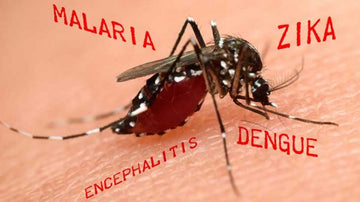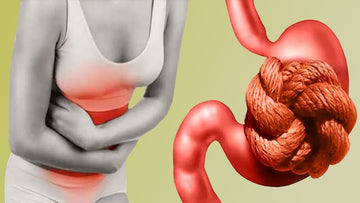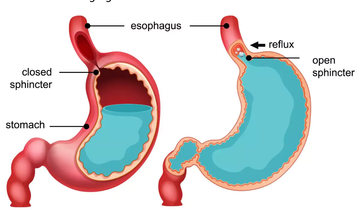Knowledge Base
What are Common Seasonal Diseases due to Imbalance of Doshas according to Ayurveda?
by Dr Vaid Ji on Sep 28, 2024

In Ayurveda, diseases are understood as imbalances in the three doshas—Vata, Pitta, and Kapha—along with seasonal variations (Ritucharya). Seasonal changes affect the balance of these doshas, and certain diseases become more common during different times of the year. Here is a brief overview of common diseases in India according to Ayurvedic principles, categorized by months or seasons:
Winter Season (Hemanta & Shishira Ritu - December to February)
• Dosha Imbalance: Kapha aggravates; Vata is pacified due to cold and dry weather.
• Common Diseases:
1. Respiratory Issues (Kasa, Shwasa) – Increased Kapha leads to colds, cough, bronchitis, and asthma.
2. Joint Pains (Sandhivata) – Vata aggravates in joints, leading to stiffness and arthritis.
3. Indigestion (Agni Mandya) – Slow digestion due to Kapha dominance.
Spring Season (Vasanta Ritu - March to April)
• Dosha Imbalance: Kapha decreases; Pitta starts to increase due to the warmer climate.
• Common Diseases:
1. Allergies (Pratishyaya) – Kapha accumulated during winter liquefies, causing colds, cough, and sinus issues.
2. Skin Diseases (Kushta) – Pitta rises, leading to skin irritations and fungal infections.
3. Asthma (Tamaka Shwasa) – Kapha imbalances trigger asthma and respiratory conditions.
Summer Season (Grishma Ritu - May to June)
• Dosha Imbalance: Pitta aggravates due to intense heat; Vata starts to accumulate.
• Common Diseases:
1. Heat Stroke (Pittaja Jwara) – Excess heat aggravates Pitta, leading to fevers, dehydration, and exhaustion.
2. Diarrhea (Atisara) – Pitta imbalance in the digestive system, leading to loose stools and indigestion.
3. Urinary Tract Infections (Mutrakrichra) – Increased Pitta affects the urinary tract, leading to infections and burning sensation.
Monsoon Season (Varsha Ritu - July to September)
• Dosha Imbalance: Vata aggravates; Kapha and Pitta imbalances fluctuate due to humidity and rain.
• Common Diseases:
1. Joint Pains (Vata Vyadhi) – Vata aggravation leads to conditions like arthritis and joint pain.
2. Skin Infections (Kushta, Twak Rog) – Fungal and bacterial infections flourish due to increased moisture.
3. Digestive Issues (Agni Mandya, Ajeerna) – Weak digestion caused by Vata imbalance and damp weather.
Autumn Season (Sharad Ritu - October to November)
• Dosha Imbalance: Pitta continues to aggravate, but starts pacifying as the weather cools.
• Common Diseases:
1. Acid Reflux (Amlapitta) – Pitta imbalance leads to hyperacidity, indigestion, and heartburn.
2. Skin Disorders (Pitta Kushta) – Pitta-related skin issues like rashes, eczema, and boils are common.
3. Fevers (Jwara) – Pitta aggravation leads to viral fevers and inflammation.
Late Monsoon/Early Winter (Pre-Winter)
• Dosha Imbalance: Vata increases; Kapha remains low.
• Common Diseases:
1. Respiratory Conditions (Shwasa, Kasa) – Vata-related breathing issues resurface with the changing season.
2. Weak Immunity (Bala Kshaya) – As Vata increases, the body’s resistance weakens, leading to infections.
In Ayurveda, understanding the seasonal influence on doshas and adopting seasonal regimens (Ritucharya) helps maintain balance and prevent these common diseases.
Winter Season (Hemanta & Shishira Ritu - December to February)
• Dosha Imbalance: Kapha aggravates; Vata is pacified due to cold and dry weather.
• Common Diseases:
1. Respiratory Issues (Kasa, Shwasa) – Increased Kapha leads to colds, cough, bronchitis, and asthma.
2. Joint Pains (Sandhivata) – Vata aggravates in joints, leading to stiffness and arthritis.
3. Indigestion (Agni Mandya) – Slow digestion due to Kapha dominance.
Spring Season (Vasanta Ritu - March to April)
• Dosha Imbalance: Kapha decreases; Pitta starts to increase due to the warmer climate.
• Common Diseases:
1. Allergies (Pratishyaya) – Kapha accumulated during winter liquefies, causing colds, cough, and sinus issues.
2. Skin Diseases (Kushta) – Pitta rises, leading to skin irritations and fungal infections.
3. Asthma (Tamaka Shwasa) – Kapha imbalances trigger asthma and respiratory conditions.
Summer Season (Grishma Ritu - May to June)
• Dosha Imbalance: Pitta aggravates due to intense heat; Vata starts to accumulate.
• Common Diseases:
1. Heat Stroke (Pittaja Jwara) – Excess heat aggravates Pitta, leading to fevers, dehydration, and exhaustion.
2. Diarrhea (Atisara) – Pitta imbalance in the digestive system, leading to loose stools and indigestion.
3. Urinary Tract Infections (Mutrakrichra) – Increased Pitta affects the urinary tract, leading to infections and burning sensation.
Monsoon Season (Varsha Ritu - July to September)
• Dosha Imbalance: Vata aggravates; Kapha and Pitta imbalances fluctuate due to humidity and rain.
• Common Diseases:
1. Joint Pains (Vata Vyadhi) – Vata aggravation leads to conditions like arthritis and joint pain.
2. Skin Infections (Kushta, Twak Rog) – Fungal and bacterial infections flourish due to increased moisture.
3. Digestive Issues (Agni Mandya, Ajeerna) – Weak digestion caused by Vata imbalance and damp weather.
Autumn Season (Sharad Ritu - October to November)
• Dosha Imbalance: Pitta continues to aggravate, but starts pacifying as the weather cools.
• Common Diseases:
1. Acid Reflux (Amlapitta) – Pitta imbalance leads to hyperacidity, indigestion, and heartburn.
2. Skin Disorders (Pitta Kushta) – Pitta-related skin issues like rashes, eczema, and boils are common.
3. Fevers (Jwara) – Pitta aggravation leads to viral fevers and inflammation.
Late Monsoon/Early Winter (Pre-Winter)
• Dosha Imbalance: Vata increases; Kapha remains low.
• Common Diseases:
1. Respiratory Conditions (Shwasa, Kasa) – Vata-related breathing issues resurface with the changing season.
2. Weak Immunity (Bala Kshaya) – As Vata increases, the body’s resistance weakens, leading to infections.
In Ayurveda, understanding the seasonal influence on doshas and adopting seasonal regimens (Ritucharya) helps maintain balance and prevent these common diseases.




